The Resource Bargain – The Root Cause of Organisational Pain
Prefer to watch on video rather than read? Click here – video is 6 mins, with captions.
The world of work is chaotic and filled with anxiety. We can track most of that back to one source – to the one thing that is rarely done well in most organisations – the Resource Bargain.
The term the ‘Resource Bargain’ comes from Stafford Beer (1926-2002), legend in systems thinking and the creator of the Viable System Model (VSM), one of the best ways to diagnose and change organisations (or any system) so they work better.

The Viable System Model
To get to the Resource Bargain, we’ll go through an outline of the VSM itself, which starts like this:
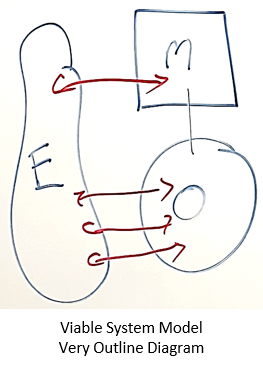
The above diagram gives us the O, the M and E. The O is your Operations, which contains the Primary Activities of what your organisation does. Unless you are an accounting firm, this is not finance, unless you are a technology company, this is not IT…you get the idea. It’s the stuff the environment wants you for.
Which is what the E is – the Environment – that with which your system interacts.
And the M – that’s Management. This probably creates the image in your head of ‘management’, but look at this as the function of management, not automatically as hierarchical management. Most likely this is represented in your organisation by roles and people with these titles, but in the VSM, the role of ‘Management’ is there as a sub-system of the Operations with the purpose of keeping the Operations viable. It could be the same group of people who do the Operations part also do the Management part.
The Management does it’s bit through it’s connection with the Operations, and also, crucially, through it’s connection with the Environment. This is where development occurs (when we talk about whole organisations we are talking ‘strategy’), with the purpose here being to make sure the Operations can change along with Environment so we’re viable tomorrow.
And what’s a ‘viable system’? One that can handle the variety of the Environment as that Environment changes.
Russian Dolls
Now, here’s the cool part – the model is recursive, which means that smaller elements work the same complete way as the larger elements. A ‘fractal’ is the same thing as a diagram or a figures, and the classic Russian Dolls is another common example.
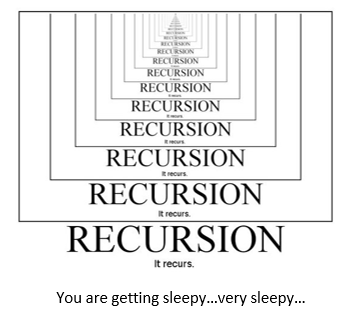
This mean each Primary Activity in the Operations part of the VSM is actually it’s own whole VSM. In other words, each Primary Activity has it’s own Management function, Operations function and interacts with the Environment, like this…
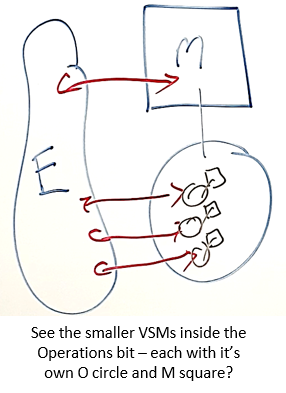
(BTW – this is why the Viable System Model is a brilliant method for both diagnosing issues in your organisation across all it’s levels of complexity, and for designing it to work better)
Connecting the Elements
It’s the interaction between the Management of the bigger system, and the Management of each of the Primary Activities in the Operations that we’re focussed on here.
To make sense of this, the below diagram shows the Management of the bigger system, which is called ‘Senior Management’, and one of the Primary Activities in the Operations area. Remember, this is it’s own viable system too, so the interaction will be between ‘Senior Management’ of the wider system, and the Management function of that Primary Activity.
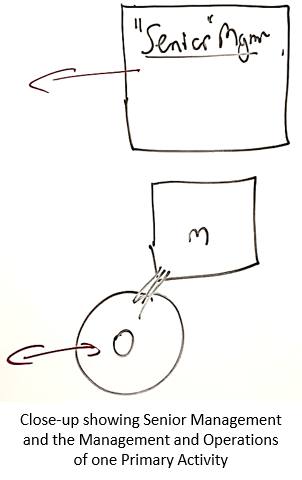
This interaction is what Stafford Beer studied closely, and he found three connections.
The first I’ll shorten from Beer’s definition and just call it ‘Requirements’. As you’d expect, this is what is required of the Primary Activity by the larger system (which is represented by Senior Management), and includes what needs to be produced, for who, within what boundaries.
If there are Requirements, there is also Accountability, which Beer defined as ‘the responsibility to produce the requirements using the resources given’. These are usually demonstrated through reports and also through direct observation.
Both of these connections are shown below.
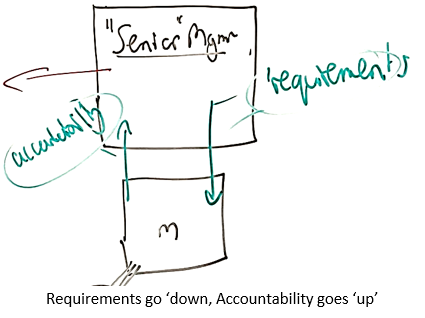
Connecting the two, however, is the crucial part that very, very few organisation gets right. And that’s the Resource Bargain. This is the deal that is made between Senior Management of the wider system and the Management function of the Primary Activity for the supply of resources that will allows them to deliver what is required.

Beer uses the word ‘deal’. As in, it’s a negotiation. A bargain is struck for resources, and remember, the first definition of bargain is ‘an agreement between groups as to what each will do for each other’.
Notice in the diagram the direction of the arrows. Requirements go down. Accountability goes up But the Resource Bargain is represented by arrows going each way. TWO WAYS.
Ask yourself now how resources are sorted out in your organisation. Is there even a negotiation? And if there is, are the requirements and the resources both part of the same discussion at the same time?
Awkward hey? But don’t worry…you’re not unusual. And therein lies the opportunity. But first we need to understand…
How Did We Get Here?
This doesn’t come about because of one person in the system. It’s a joint effort.
Those in Senior Management are also in the role of Management of a Primary Activity, just at a wider level of recursion. So they are copping the same lack of bargaining too. Add this to the pressure to perform as a ‘senior’ person coupled with little history of these negotiations going well and the usual situation of a dominant presence emerges quickly.
And ‘dominance’ doesn’t always take the form of overt strength, insistence and not listening, it can also take the form of caretaking, “come on, you can do it” and other warm manipulations…but either way, it’s not a real negotiation.
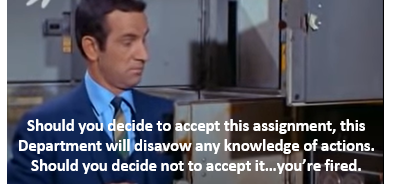
And those being hit with requirements can easily find themselves in a position where nodding and suffering silently is the easier pathway. Token resistance is an effective survival strategy, and it allows ultimate responsibility for the failure of delivery to seem like it sits on the Senior Manager…which is a much more comforting position.
Both sides of the equation don’t want to get cut from the social system called the organisation, so we have an accidental collusion going on that guarantees a lopsided Resource Bargain.
What do we do in a lop-sided Resource Bargain? We juggle! We move 25 projects forward 5% at a time so no-one is too disappointed, and we can all survive another day. Meanwhile the anxiety builds, and everyone gets more disappointed…at which point a new organisation beckons, staff leave, and the merry-go-round continues.
How Do We Fix It?
To fix this, a deep breath is required, then….TRUST.
Trust throughout the system. Not all at once, but starting somewhere, anywhere, then gradually spreading like moisture through a tissue.
Trust by the Senior Management function that the Primary Activity Management function is telling the truth with what they say they can and can’t do with the proposed resources. Trust from by the Primary Activity Management function that the Senior Management function will believe what they say, so they won’t have to low-ball what they can do to account for the inevitable increase.
Trust by all that, if it turns out the work can be done faster than expected, there won’t be frowns. Instead there will be curiosity. Trust by all that if the work takes longer than expected, then it took longer than expected. And again, there will be curiosity, not frowns.
That’s why all of this takes a deep breath. Because someone is going to have to put themselves out there and say “this is how I’d like to work…and so I’m going to take the risk of asking you…then believing you”. To risk betrayal. It’s a big thing!
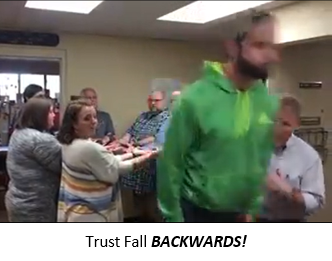
Putting yourself out there like this is a lot more anxious-making than living with the standard anxious discord that we’ve all become used to. But to reduce work anxiety across the board, we need a Resource Bargain that is agreed to, so true accountability can be taken for requirements, people can feel valuable because they can deliver, which in turn creates the results we’re all looking for.
Deep breath.
